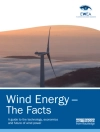This book explores continuity and ruptures in the historical use of visual representations in science and related disciplines such as art history and anthropology. The book also considers more recent developments that attest to the unprecedented importance of scientific visualizations, such as video recordings, animations, simulations, graphs, and enhanced realities. The volume collects historical reflections concerned with the use of visual material, visualization, and vision in science from a historical perspective, ranging across multiple cultures from antiquity until present day.
The focus is on visual representations such as drawings, prints, tables, mathematical symbols, photos, data visualizations, mapping processes, and (on a meta-level) visualizations of data extracted from historical sources to visually support the historical research itself. Continuity and ruptures between the past and present use of visual material are presented against the backdrop of the epistemic functions of visual material in science. The function of visual material is defined according to three major epistemic categories: exploration, transformation, and transmission of knowledge.
Innehållsförteckning
Part I: Transmission.- Chapter 1.
Visual Culture Of University Knowledge: The Lecture Notebooks From Louvain And Douai (17th-18th Centuries)(Gwendoline De Mûelenaere – University Of Louvain, Belgium).- Chapter 2.
The Illustrated Printed Page As A Tool For Thinking And Transmitting Knowledge. The Case Of Renaissance Astronomical Books(Isabelle Pantin).- Chapter 3.
Representing Experience In The Early Royal Society. The Case Of Robert Hooke?S Micrographia (1665)(Salvatore Ricciardo – University Of Bergamo, Italy).- Chapter 4.
Vision On Vision: Early Modern Scientific Images On Cosmology Explored By Means Of Second Order Images(Matteo Valleriani, Florian Kräutli).- Part II: Transformation.- Chapter 5.
Theorizing Technology: Theōria, Diagram, And Artifact In Hero Of Alexandria(Courtney Roby).- Chapter 6.
Artistic ’Libido’ And Scientific Truth In 16th Century Woodcut Illustrations(Magdalena Bushart).- Chapter 7.
Capturing, Modeling, Overviewing And Making Credible: The Functions Of Visual At The Accademia Del Cimento(Giulia Giannini).- Chapter 8. The Transformations Of Physico-Mathematical Visual Thinking: From Descartes To Quantum Physics(Enrico Giannetto).- Part III: Exploration.- Chapter 9.
Transporting Asian And Australasian Nature To Europe: Photographs From The Voyage Of HMS. Challenger 1872–1876(Stephanie Hood).- Chapter 10.
Visualising Biodata In The Laboratory. Image-Makers, Practices And Reinvention In Magnetic Resonance Technology(Silvia Casini).- Chapter 11.
Arguing From Appearance: The Numerical Reconstruction Of Galactic Tails And Bridges(Matthias Schemmel).- Chapter 12.
Ethnoscience And Spatial Representations Of Climate Change(Elena Bougleux).
Om författaren
Matteo Valleriani is a research group leader at the Department I at the Max Planck Institute for the History of Science in Berlin, honorary professor at the Technische Universität of Berlin, and professor by Special Appointments at the University of Tel Aviv. He investigates the relation between diffusion processes of scientific, practical, and technological knowledge and their economic and political preconditions. His research focuses on the Hellenistic period, the late Middle Ages, and the Early Modern Period. Among his principal research endeavors, he leads the project “The Sphere: Knowledge System Evolution and the Shared Scientific Identity of Europe, ” which investigates the formation and evolution of a shared scientific identity in Europe between the thirteenth and seventeenth centuries. Among his publications, he has authored the book Galileo Engineer (Springer 2010), is editor of The Structures of Practical Knowledge (Springer Nature 2017), and published De sphaera of Johannes de Sacrobosco in the Early Modern Period. The Authors of the Commentaries (Springer Nature 2020)
Giulia Giannini is Associate Professor of History of Science at the University of Milan (Italy). She is the principal investigator of the ERC Consolidator research project “TACITROOTS – The Accademia del Cimento in Florence: tracing the roots of the European scientific enterprise”, which investigates the historical process of establishment of scientific societies in Europe, the emergence of a shared scientific discourse, and its normalization (Horizon 2020, GA 818098). She worked at the Center Koyré in Paris and at the Max Planck Institute for the History of Science in Berlin. Her research interests focus on the history of experimentation, and on cultural, political, and social studies of science in Early Modern Europe. Among recent project, she is the co-editor, with Mordechai Feingold, of The Institutionalization of Science in Early Modern Europe (Brill 2020).
Enrico Giannetto was a graduate at the University of Padova in elementary particle theoretical physics, and then he studied early universe cosmology at the ISAS of Trieste. He studied history of science at the Domus Galilaeana in Pisa and obtained his doctorate in theoretical physics of condensed matter at the University of Messina. He has been working as a researcher for ten years at the University of Pavia within the History of Science & Science Education Group. Here, he taught in particular General Physics. Since 2001, he is a full professor of History of Physics and History of Science, since 2002 at the University of Bergamo, Italy. Here, he has been teaching many disciplines from History of Scientific Thinking, to Theoretical Philosophy, Epistemology of Complexity, and Physics. His researches are focused on a perspectiveof a wide history of cultures where mythology, history of religions, anthropology, philosophy, human and natural science are entangled. In particular, he has done research works on the following disciplines among others: quantum chromodynamics, quantum electrodynamics, early universe quantum cosmology, phase transitions in cosmology and condensed matter, special and general relativity, foundations of quantum mechanics, quantum logic; history of quantum physics, of relativity, of chaos physics, of elementary particle physics, of medieval physics, of romantic natural philosophy, of the scientific revolution and of theoretical physics, history of psychology versus physics, science education, hermeneutics, philosophy of dialogue, anthropology of scientific thinking, and history of primeval Christianity. He has published more than 200 scientific papers and four major books: Saggi di Storie del Pensiero Scientifico, Bergamo University Press, Bergamo 2005; Il vangelo di Giuda—traduzione dal copto e commento, Medusa, Milano 2006; “Un fisico delle origini. Heidegger, la scienza e la Natura, Donzelli, Roma 2010; Sguardi sul pensiero contemporaneo. Filosofia e scienze per cambiare il mondo, libreriauniversitaria.it, Limena (PD) 2018.












